Abstract
Quantitative methods for enumerating viable L. enriettii in tissues have been used to determine the course of cutaneous leishmaniasis in guinea-pigs. The development and kinetics of acquired resistance have been evaluated in self-healing and chronic metastatic forms of the disease. It is revealed that 3 weeks after a primary local infection, a standard challenge infection is totally eliminated within 7 days. This resistance is as strong in animals with a current infection as it is in those that have fully recovered from such an infection. Animals developing metastatic disease also develop resistance to the standard challenge. This is initially as strong as in animals with only localized disease, but wanes with the progression of the infection. Although the quality of resistance becomes poorer in animals with metastatic infection, it is not lost completely. The relationship between acquired resistance and the resolution of the primary infection is discussed.
Full text
PDF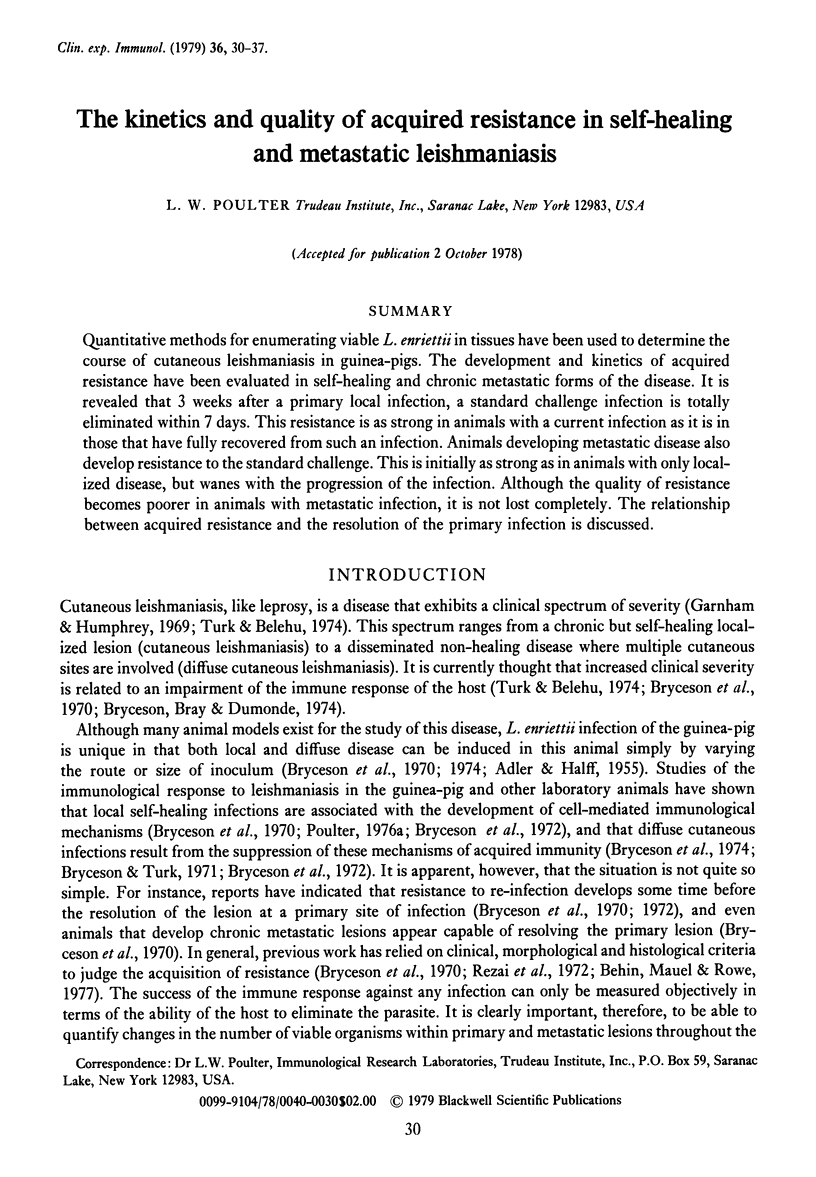
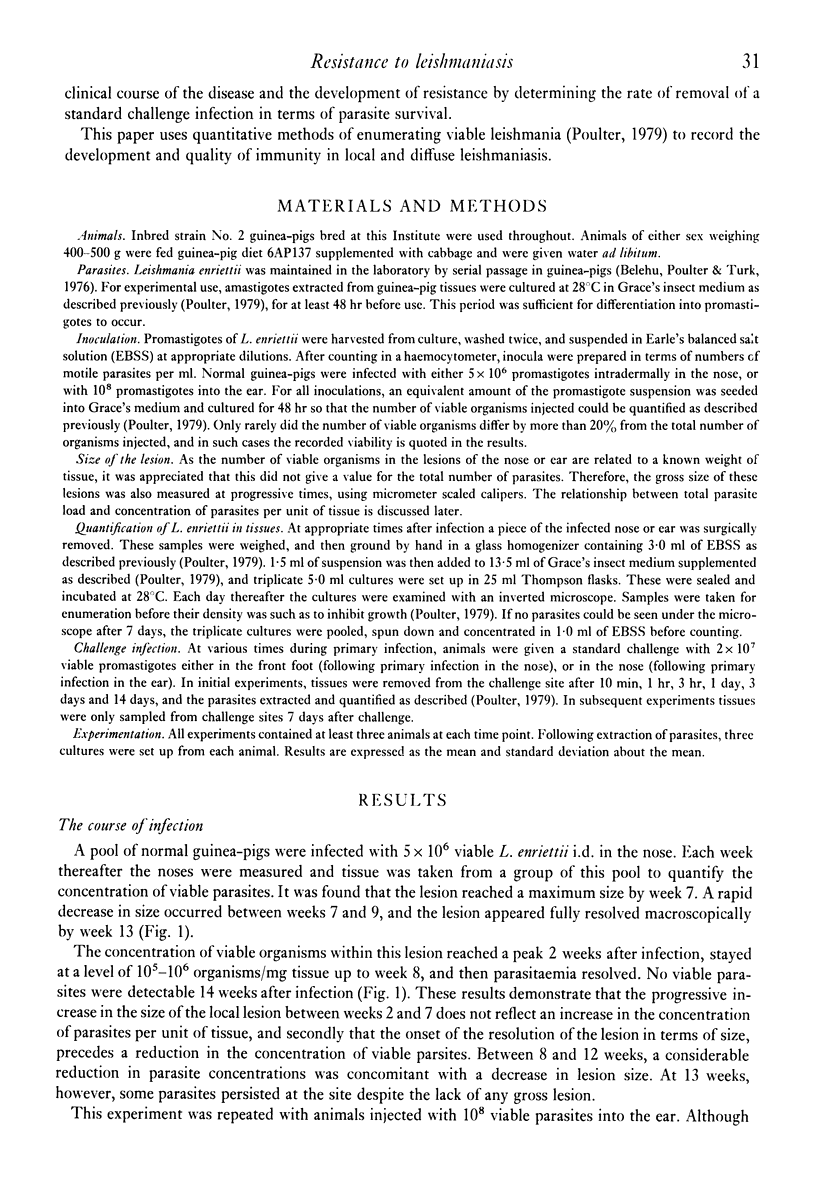
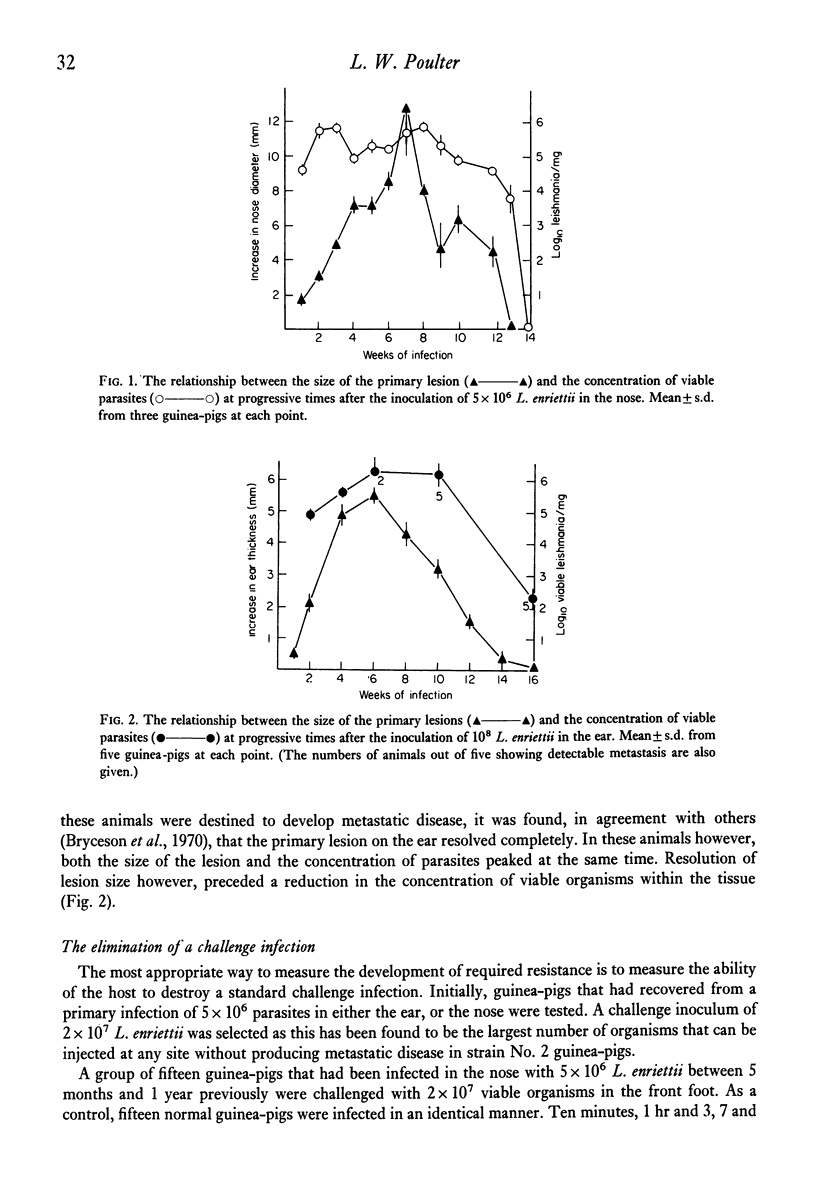
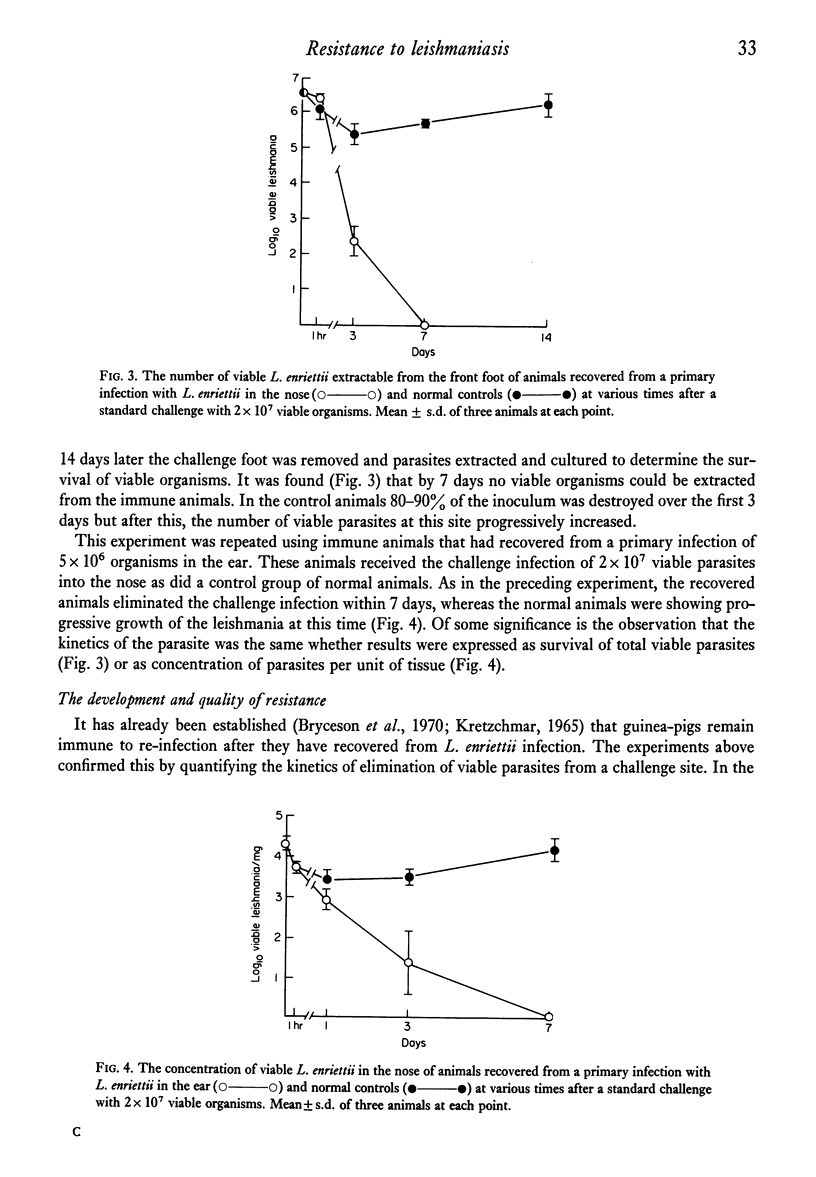
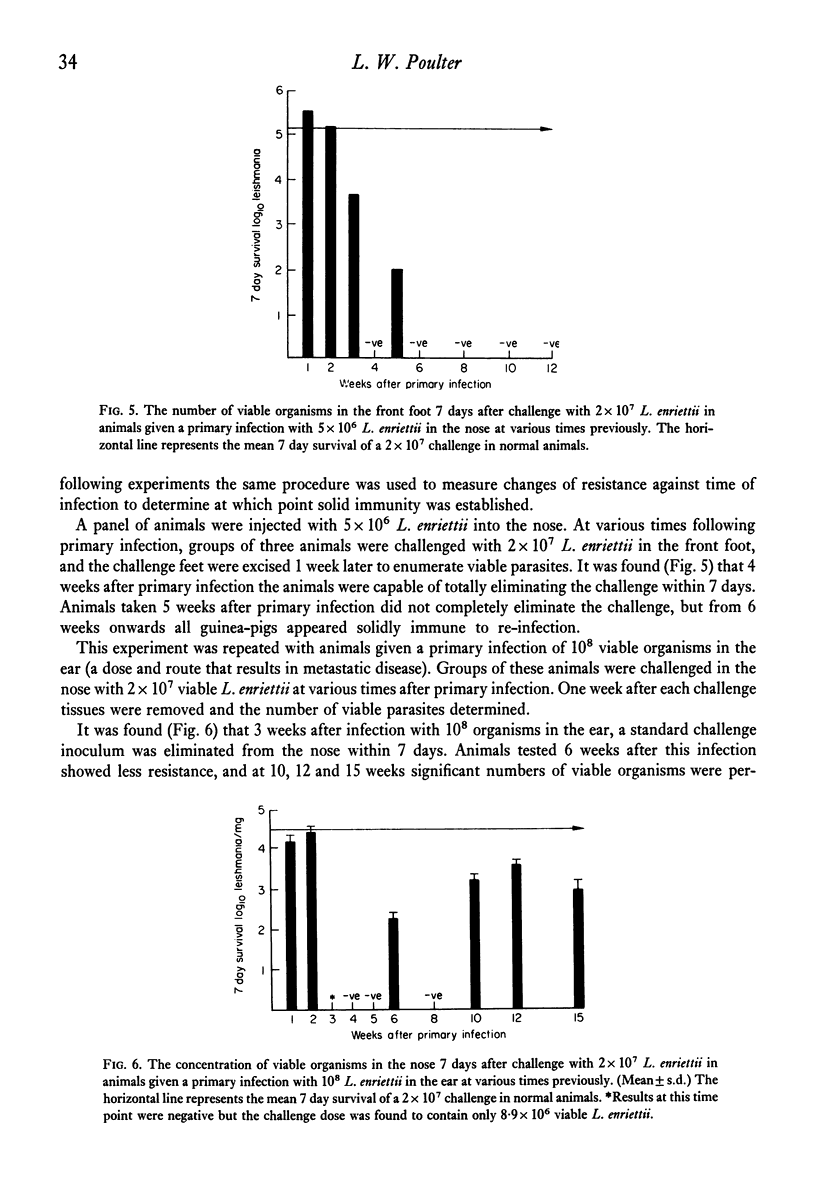
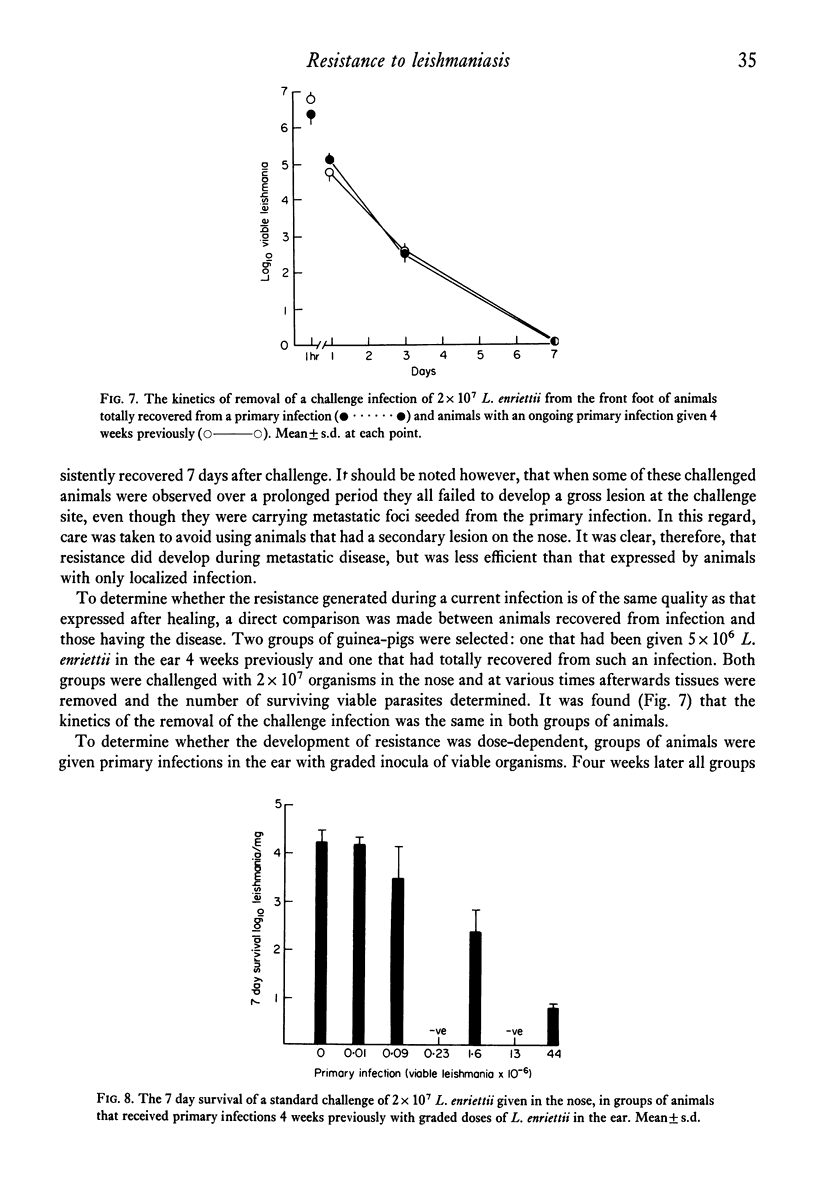
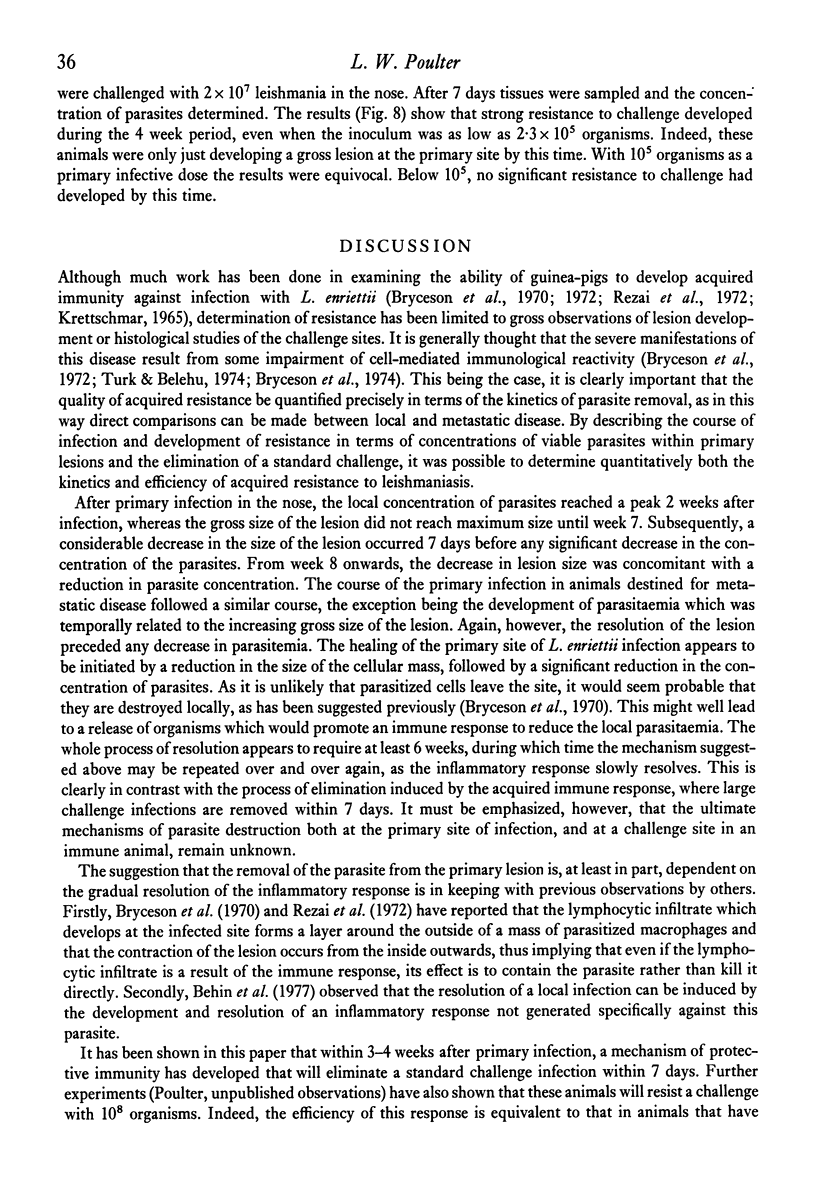
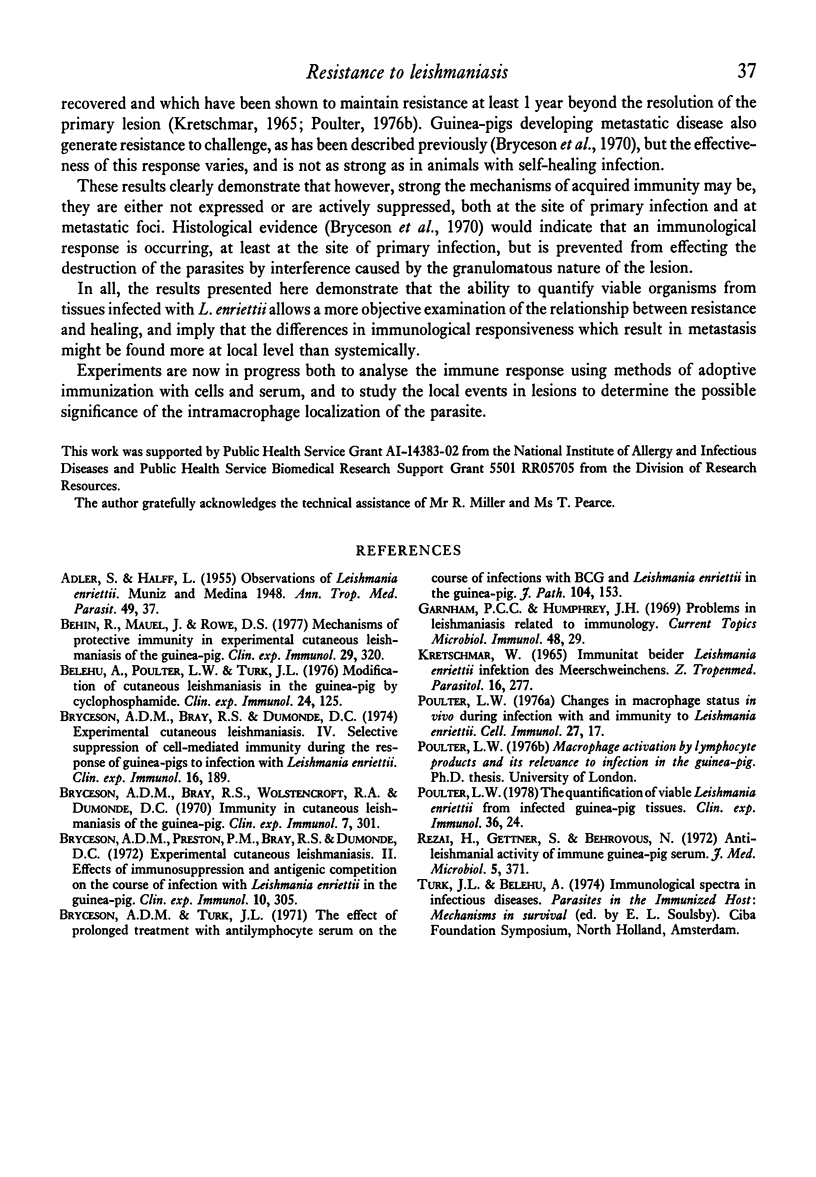
Selected References
These references are in PubMed. This may not be the complete list of references from this article.
- ADLER S., HALFF L. Observations on Leishmania enriettii Muniz and Medina, 1948. Ann Trop Med Parasitol. 1955 Mar;49(1):37–41. doi: 10.1080/00034983.1955.11685649. [DOI] [PubMed] [Google Scholar]
- Behin R., Mauel J., Rowe D. S. Mechanisms of protective immunity in experimental cutaneous leishmaniasis of the guinea-pig. III. Inhibition of leishmanial lesion in the guinea-pig by delayed hypersensitivity reaction to unrelated antigens. Clin Exp Immunol. 1977 Aug;29(2):320–325. [PMC free article] [PubMed] [Google Scholar]
- Belehu A., Poulter L. W., Turk J. L. Modification of cutaneous leishmaniasis in the guinea-pig by cyclophosphamide. Clin Exp Immunol. 1976 Apr;24(1):125–132. [PMC free article] [PubMed] [Google Scholar]
- Bryceson A. D., Bray R. S., Wolstencroft R. A., Dumonde D. C. Immunity in cutaneous leishmaniasis of the guinea-pig. Clin Exp Immunol. 1970 Sep;7(3):301–341. [PMC free article] [PubMed] [Google Scholar]
- Bryceson A. D., Preston P. M., Bray R. S., Dumonde D. C. Experimental cutaneous leishmaniasis. II. Effects of immunosuppression and antigenic competition on the course of infection with Leishmania enriettii in the guinea-pig. Clin Exp Immunol. 1972 Feb;10(2):305–335. [PMC free article] [PubMed] [Google Scholar]
- Bryceson A. D., Turk J. L. The effect of prolonged treatment with antilymphocyte serum on the course of infections with BCG and Leishmania enriettii in the guinea-pig. J Pathol. 1971 Jul;104(3):153–165. doi: 10.1002/path.1711040302. [DOI] [PubMed] [Google Scholar]
- Garnham P. C., Humphrey J. H. Problems in leishmaniasis related to immunology. Curr Top Microbiol Immunol. 1969;48:29–42. doi: 10.1007/978-3-642-46163-7_2. [DOI] [PubMed] [Google Scholar]
- Kretschmar W. Immunität bei der Leishmania enriettii-Infektion des Meerschweinchens. Z Tropenmed Parasitol. 1965 Oct;16(3):277–283. [PubMed] [Google Scholar]
- Poulter L. W. Changes in macrophage status in vivo during infection with and immunity to Leismania enrietti. Cell Immunol. 1976 Nov;27(1):17–25. doi: 10.1016/0008-8749(76)90149-0. [DOI] [PubMed] [Google Scholar]
- Rezai H., Gettner S., Behforouz N. Anti-leishmanial activity of immune guinea-pig serum. J Med Microbiol. 1972 Aug;5(3):371–375. doi: 10.1099/00222615-5-3-371. [DOI] [PubMed] [Google Scholar]


